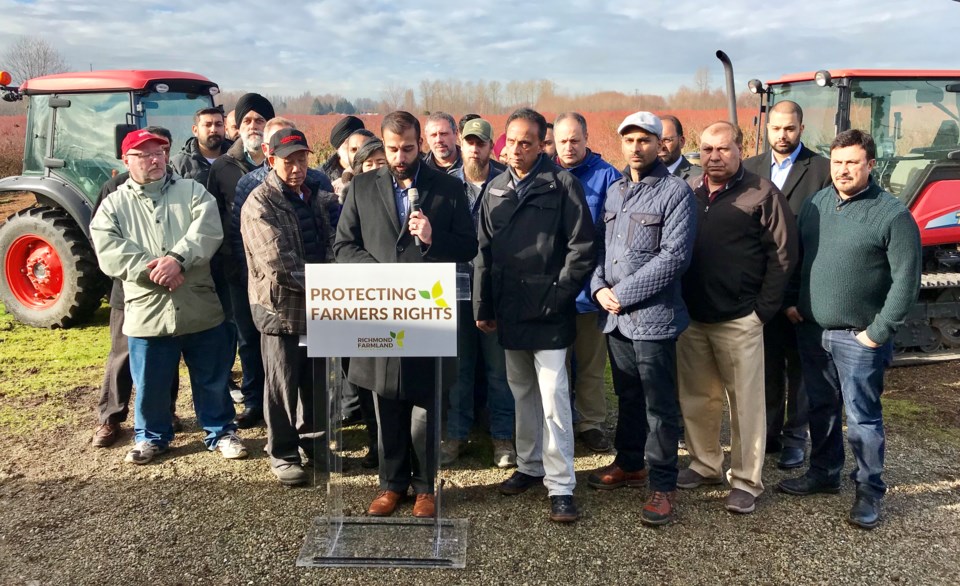´ˇĚýgroup of land owners and farmers in Richmond is fighting back against what they call special interests intent on convincing city council to dial back the size of homes allowed on farmland.
The Richmond Farmland Owners Association has launched a campaign and online petition to protect farmers’ property rights and land value.
The move comes as city council considers public input on a review of farmland houses sizes.Â
Last May, via a new bylaw, council restricted houses to 10,763 square feet on lots over half an acre. Provincial guidelines state a house should be no larger than 5,382 square feet, although municipalities have the discretion to go bigger (Maple Ridge) or smaller (Delta).
City staff recommended provincial guidelines become part of the bylaw but seven of nine councillors decided to double it last spring, while promising a possible review last November.Â
Now, the association wants to keep the status quo, claiming it is a compromise. It notes home plate restrictions were established (meaning the amount of land that can be developed for any given purpose — a home, driveway, barn or swimming pool). As such, the actual amount of land being developed is relatively nominal.
After the bylaw was implemented, the association claims the average home being built on Richmond farmland is 8,192 square feet in size (compared to about 12,000 square feet prior to adoption).
“This policy has been in effect for merely six months and the true effects are yet to be realized; but due to pressure from special interest groups, Richmond City Council is considering dramatically reducing these home sizes again,” noted consultant Gunraj Gill, via a news release.
A further claim is that big houses are needed to house extended families, who work the fields.
Council did allow farmers to apply for even larger homes if an argument could be made that a farm required such a multi-family unit. Association supporters have already cited two main reasons for opposing further limits.
On the Change.org petition Bob Sethi and Bill Dhiman note the City of Richmond would be infringing on their property rights, while Amrit Brar said “the City should consider the loss of value that owners of farmland would have to endure if house sizes are reduced further.”
The association is pitted squarely against Richmond FarmWatch, which protested unaffordable homes in the Lower Mainland at a rally Sunday in Downtown Vancouver.
“Richmond FarmWatch is petitioning the City of Richmond to follow provincial guidelines to limit home sizes on farmland and calling on the provincial government to finally implement the Foreign Buyer’s Tax on farmland,” stated FarmWatch in a statement Monday.Â
There is a public rally planned at Richmond City Hall Monday, Feb. 26 at 6:30 p.m. A petition by Richmond Citizens Association (a local NDP arm) has reached 4,400 signatures and will be presented to council.
Many consider large homes as vehicles of speculation, driving up land values and making it impossible for new farmers to own and invest in land. Speculation could also lead to pulling land out of the Agricultural Land Reserve.
According to an economic analysis by the late economist Richard Wozny, a house of 4,200 square feet keeps in line with farm land values. As such, FarmWatch considers 5,382 square feet a compromise.
Presently, Richmond farmland is rife with multi-million dollar land deals and flips on parcels less than 10 acres.Â
An eight-acre plot on No. 2 Road recently rose in value from $88,000 to $8.3 million due explicitly to the construction of a nearly 12,000-square-foot home, according to BC Assessment.
Staff had initially brought the matter to council’s attention in July 2016, noting a 41,000-square foot home was denied by planners as it was a de facto hotel.



